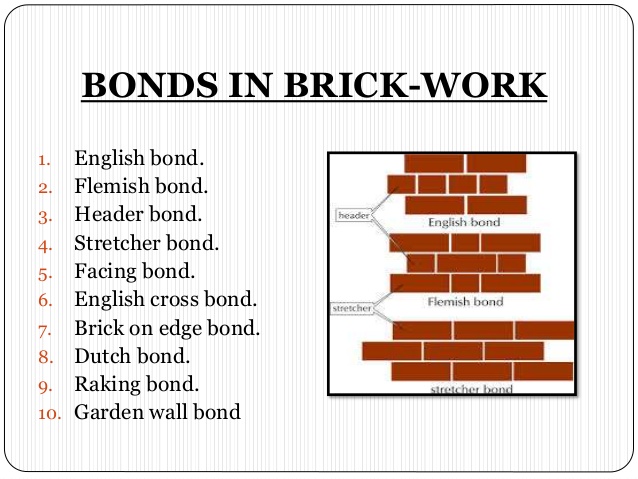Given below various types of bonds generally found in brick work.
- Stretcher bond
- Header bond
- Facing bond
- English bond
- Flemish bond
- Dutch bond
- English cross bond
- Brick on edge bond
- Raking bond
- Zigzag bond
- Garden wall bond
Definition of a Stretcher Bond
To develop stretcher bond, bricks are placed horizontally like stretchers on the faces of walls. The length of the bricks remains along the horizontal direction of the wall.
If it is required to build up the walls with half brick thickness, stretcher bond becomes very effective. The normal size of the brick is 9cmx9cmx18cm. If the wall having thickness 9cm is to be built up, then stretcher bond will be ideal for that.
Different types of wall constructions are accomplished with this type of bond.
- Sleeper walls
- Partition walls
- Division walls (internal dividers)
- Chimney stacks
It should be kept in mind that this bond will be effective for the walls having less thickness and the bond will not be suitable when the thickness of the walls is in excess of half of the length of the brick.
Definition of Header Bond
The square face of the brick with dimension (9cm x 9cm x 9cm) is known as “header”.
When all the bricks are arranged as headers on the faces of the walls, the bond that is developed is described as “Header Bond”.
Header bond is applicable for developing the walls with full brick thickness which estimates 18cm.
Header bond is defined as heading bond. The overlap is retained the same as half width of the brick. To attain this, three quarter brick bats are applied in alternate courses as quoins.
Since header bonds do not contain enough strength in delivering pressure along the length of the wall, it is not recommended to employ this type of bond for load bearing walls.
Header bond is ideal when the design calls for curved surfaces to be built up. In such cases, stretcher bond should not be applied. In addition to utilize it for curved surface, it is also very useful for the brickwork in foundations.





